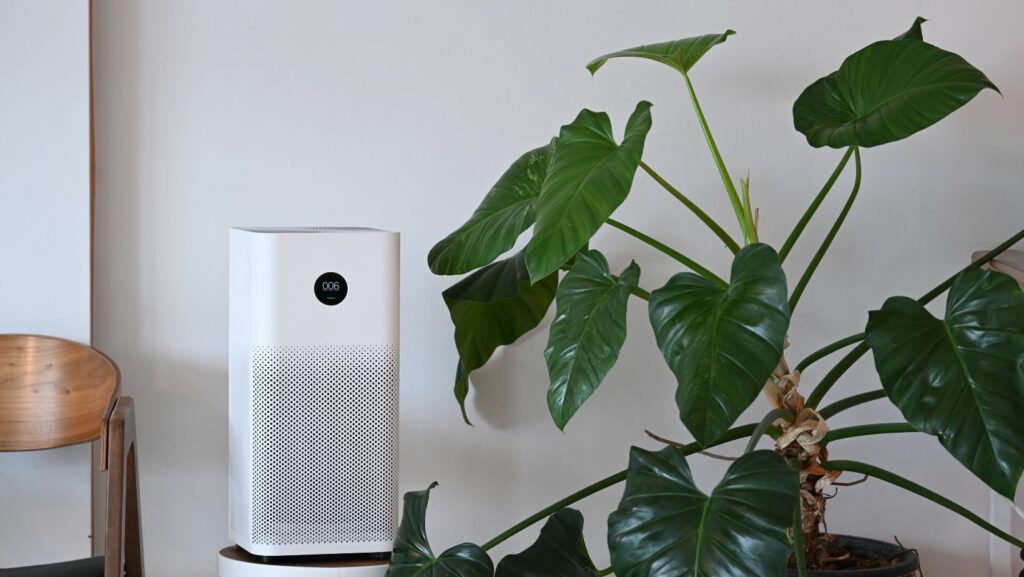In today’s world, where air quality is a growing concern, finding effective solutions to maintain clean indoor air has become crucial. Enter the FSA air purifier, a device that not only promises to cleanse your living space of pollutants but also offers the convenience of being covered by flexible spending accounts (FSAs). This makes it an accessible option for many who are looking to invest in their health and well-being without breaking the bank.
FSA Air Purifier
The FSA Air Purifier stands out with its efficiency in purifying indoor environments and its eligibility for purchase using Flexible Spending Accounts. It effectively removes contaminants like dust, pollen, and smoke, making it an ideal choice for homes and offices.
Key Features
 The FSA Air Purifier offers several compelling features that make it a top choice for improving air quality:
The FSA Air Purifier offers several compelling features that make it a top choice for improving air quality:
-
High-Efficiency Particulate Air (HEPA) Filters: These filters capture 99.97% of airborne particles, including those as small as 0.3 microns.
-
Carbon Activated Filters: They remove odors and volatile organic compounds (VOCs), enhancing the freshness of the air.
-
Adjustable Settings: Users can customize the operation speed to match the room size and air quality needs.
-
Quiet Operation: The device operates silently, ensuring it doesn’t disrupt sleep or daily activities.
-
Energy Efficiency: It’s designed to consume minimal electricity, making it cost-effective to run continuously.
-
Sleek and Compact Design: The purifier boasts a modern look that fits well in any setting, be it a bedroom or a corporate office.
-
Durable Materials: Made with high-quality materials, the air purifier withstands regular use without degradation of performance.
-
Easy Maintenance: The device is designed for easy access to filters for quick replacements, requiring minimal effort to maintain.
-
Portable: Lightweight construction allows for easy movement from one room to another, offering flexibility in usage.
Performance Evaluation
 The FSA Air Purifier has undergone extensive testing to ensure it meets high standards of air purification efficiency and operational economy. Analyzing its filtration competence and power usage provides insights into its effectiveness and suitability for home and office environments.
The FSA Air Purifier has undergone extensive testing to ensure it meets high standards of air purification efficiency and operational economy. Analyzing its filtration competence and power usage provides insights into its effectiveness and suitability for home and office environments.
The FSA Air Purifier employs a dual-layer filtering system featuring a HEPA filter combined with an activated carbon filter. This dual system ensures the removal of 99.97% of airborne particles as small as 0.3 microns, including dust, pollen, and smoke. Owners benefit from the unit’s ability to efficiently eradicate a broad range of airborne pollutants, ensuring cleaner air circulation. Tests have shown that the FSA Air Purifier maintains consistent performance over time, attributing to its structured design and high-quality filters.
Noise Level and Energy Consumption
The design of the FSA Air Purifier prioritizes not only efficiency but also user comfort and environmental sustainability. It operates at a noise level range of 20 to 50 decibels, which is comparable to a whisper, ensuring it does not disrupt daily activities or sleep. Additionally, the air purifier is optimized for low energy consumption, often using no more power than a standard household light bulb. This energy efficiency does not compromise the purifier’s performance, making it both eco-friendly and cost-effective for continuous use.
Comparisons With Other Air Purifiers
Performance and Efficiency
The FSA Air Purifier claims a 99.97% effectiveness in removing airborne pollutants such as dust, pollen, and smoke. When compared to similar models, like the HEPA standard purifiers, it matches in efficiency but often surpasses in longevity and consistency of performance. This ensures users get sustained protection against particulates without frequent filter replacements.
Noise Level and User Comfort
 Among competing products, the FSA Air Purifier offers a compelling advantage with its surprisingly low noise output, marked between 20 to 50 decibels. Models like Honeywell and Blueair also provide quiet operation, but FSA stands out for maintaining minimal noise across its entire operational range—important for night-time use in living spaces or bedrooms.
Among competing products, the FSA Air Purifier offers a compelling advantage with its surprisingly low noise output, marked between 20 to 50 decibels. Models like Honeywell and Blueair also provide quiet operation, but FSA stands out for maintaining minimal noise across its entire operational range—important for night-time use in living spaces or bedrooms.
Energy consumption is another pivotal factor. The FSA Air Purifier operates comparably to the energy usage of a standard household light bulb, thus presenting a less burdensome addition to monthly electricity bills than some higher-end models. For instance, brands like Dyson and Philips often integrate various additional functionalities that, while useful, escalate energy consumption.
FSA’s balance of high efficiency, low sound levels, and economical power usage crafts an appealing option for those prioritizing practicality in their air purification choices. This establishes the FSA Air Purifier as a robust competitor, holding its ground in areas indispensable to health-conscious and eco-aware consumers.

